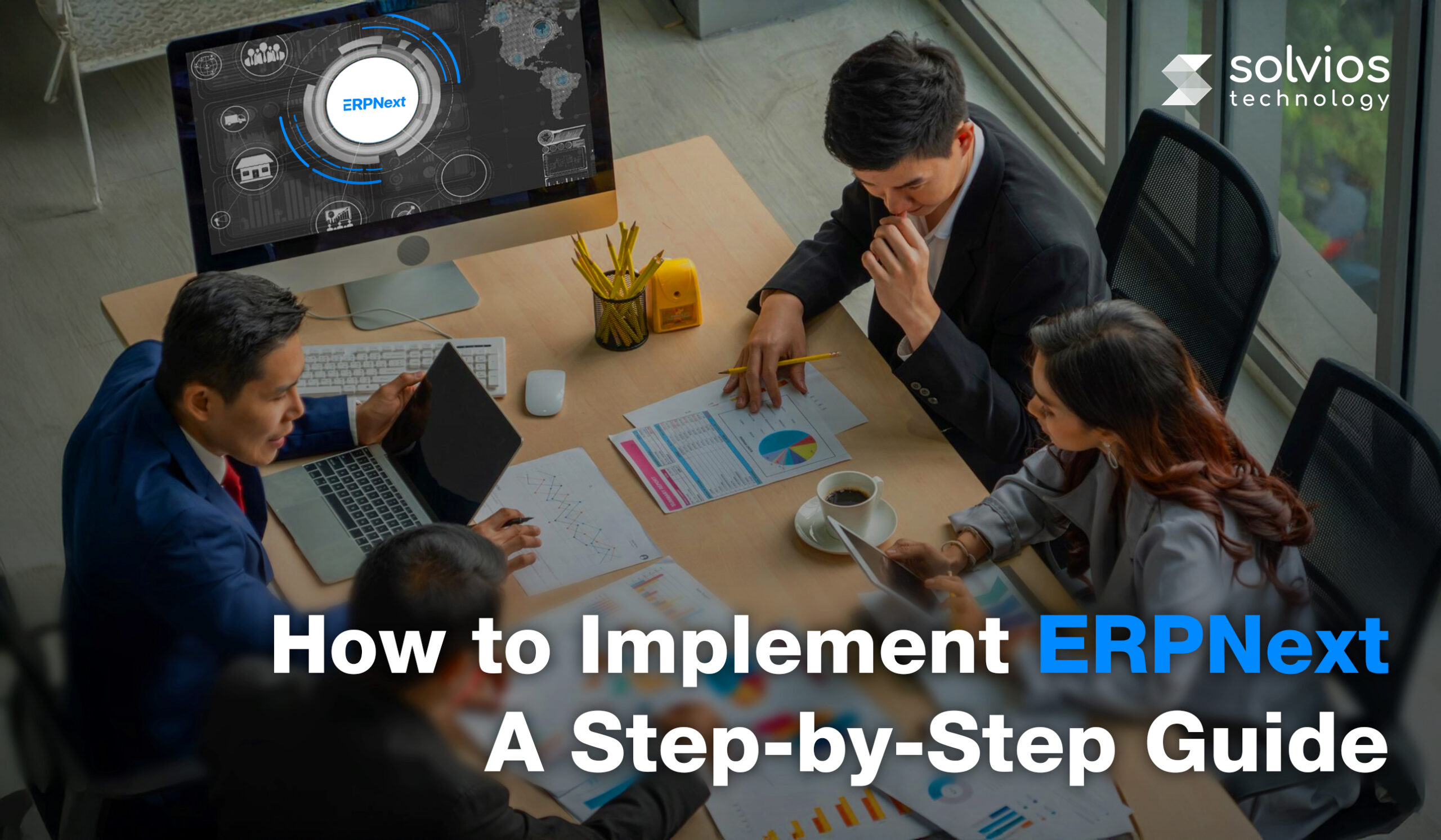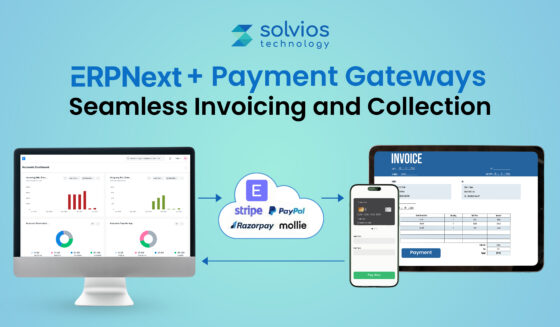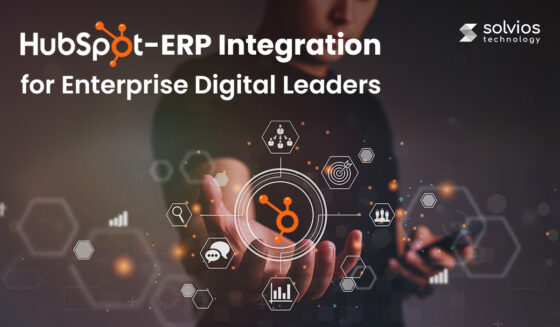
Introduction
Implementing an ERP can feel overwhelming, especially when every process and department runs differently.
Interestingly, that’s where ERPNext makes a difference.
It brings accounting, HR, sales, and operations into one connected system: simple, flexible, and built for real businesses.
This guide walks you through each step of ERPNext implementation, enabling you to plan more effectively, avoid chaos, and roll out smoothly.
Understanding ERPNext
Ever managed a growing business? Your workflow is likely pieced together with too many disconnected tools.
Interestingly, this is where ERPNext steps into the picture. It’s an open-source ERP platform designed to streamline operations for small and mid-sized companies. The app helps you improve your workflow without requiring any expensive enterprise solutions.
What’s more? ERPNext implementation enables you to centralize operations, eliminating the need to switch between different apps for accounting, HR software, and spreadsheets.
Here are some perks that ERPNext adds to your business:
1. Cost-effective:
ERPNext is open-source, making it an affordable solution over a complete enterprise-focused SaaS solution.
2. Customizable per your operations:
Adaptable to your operations: ERPNext’s adaptability allows it to be created to function as your workflow does.
3. Support from an active community:
ERPNext is supported by a vibrant development and user community that assists business owners in resolving common issues.
Any firm can benefit from ERPNext implementation, which streamlines processes efficiently and effectively.
Pre-Implementation Planning for ERPNext
Much like any other software, you need to plan before implementing ERPNext into your workflow. Planning the execution saves you confusion and creates a system that works for your business.
Here’s a closer look at some quick steps you can follow before ERPNext implementation:
Define Business Objectives
Start by auditing your business and understanding what’s not working inside the workflow. Look for scrambled data, manual processes, and communication gaps. Once the pain points are clear, use ERPNext to target and streamline them.
Assemble an Implementation Team
Bring together people from finance, operations, HR, and IT. Give each member ownership of specific processes so feedback is grounded in real use.
Choose Deployment Option
Decide between cloud or on-premise. Cloud offers flexibility and faster updates; on-premise solutions provide more control. Balance cost, scale, and data sensitivity before finalizing. Whether you go cloud or on-premise, each has trade-offs. For a deeper dive, read our post on ERPNext deployment models: cloud vs on-premise
Need help implementing ERPNext for your business?
Ask our expertsStep-by-Step ERPNext Implementation Guide
Rolling out ERPNext isn’t about “installing software.” It’s more like slowly rethinking and reconfiguring how your business operates and communicates. Every step builds on the one before it. Skip a stage, and you’ll feel it later, when users start struggling or reports don’t line up. Here’s how an implementation usually unfolds when done with care.
Discovery & Business Process Analysis
Before any setup begins, there’s discovery. This is where you spend time talking, not coding.
- Map how things actually work: Sit with teams, observe the flow of data, and see where approvals stall or work gets redone.
- Spot the real gaps: Those small, silent inefficiencies are usually where automation pays off fastest.
- Write it down: Don’t trust memory. Every insight turns into a note that the developers will need later.
If there’s one stage worth slowing down for, this is it. Mistakes here echo through the rest of the project.
ERPNext Module Planning & Configuration
Once you know what needs fixing, you decide how deep the rollout goes. ERPNext comes with everything from finance to HR, but you don’t need it all at once.
Start where pain is highest: Usually, that’s accounting or inventory. Start where your pain is highest—often in accounting or inventory—and consult a detailed breakdown of ERPNext modules to streamline operations to choose wisely.
- Align customization as per workflow: Don’t just customize your ERP; use the customization option to configure different aspects of your workflows.
- Create a hierarchy among users: Avoid giving complete access to every member. Set a hierarchy where different members have different roles.
This is the wiring of your system; invisible but crucial.
Data Migration & Master Data Setup
Every company believes its data is “mostly fine.” It never is. This step usually takes longer than expected, and that’s okay.
- Clean before moving: Old systems collect junk: duplicate names, missing IDs, outdated vendors. Get rid of it.
- Map and test: Ensure the columns match exactly; one incorrect field can mess up reporting for months.
- Check the totals: After you import, run some sample reports and check to see whether the numbers match what you have on file.
Don’t take any shortcuts while moving data; it’s like surgery.
Customization & Integration
Customization and integration are two essential aspects of working with ERPNext. Although the platform is flexible for many businesses, adding some level of customization ensures the ERP remains true to your operations.
Here are a few key aspects to look into in this part:
- Customize user logic: Add unique custom logic to your workflows to automate parts of your daily operations.
- Integrate your workflow: Ensure your ERP covers complete dataflow throughout. Integrate your ERP through different parts of the workflow to ensure complete data flow.
- Test before launch: Don’t just connect the ERP to your system and go live. Test the setup in real time with users in sandbox.
The trick is balance – too little customization limits flexibility, too much makes updates painful.
Testing & User Acceptance Testing (UAT)
Now, you see if everything you planned actually works. Testing builds confidence more than perfection.
- System testing: Developers run scripts and scenarios to confirm functionality.
- User testing: Involve your team in testing the ERP in real-time. It helps you understand how readily they can adapt to the system.
- Incorporate Feedbacks: Stay on the loop with your team for regular feedbacks. It helps you improve functions within the workflow.
Don’t rush it. A few extra days of testing can save months of “we didn’t know it worked like that.”
Training & Documentation
ERP systems fail when users feel lost. Training fixes that before frustration sets in.
- Teach by doing: Let users click through mock data. Hands-on beats theory every time.
- Create bite-size guides: Quick steps they can glance at mid-task, no long manuals needed.
- Nominate ERP champions: A few internal go-to people keep the momentum going after consultants leave.
Remember, teams don’t resist change, they resist confusion. Training bridges that gap.
Go-Live & Post-Go-Live Support
Go-live isn’t the end. It’s the start of a learning curve. The first few weeks decide whether adoption sticks or fades.
- Launch in phases: Don’t go all-in with the implementation. Move to ERPNext in multiple phases.
- Don’t delay updates: Figure out what’s not working and fix it in real-time. Remember, quick fixes save your systems from delay in operations.
Once the noise settles, review everything. What worked stays; what didn’t gets reworked. That’s how ERPNext turns from software into something teams actually rely on.
When handled in phases, ERPNext doesn’t just replace old tools, it replaces old habits. Data gets cleaner, conversations get shorter, and decisions finally line up with what’s happening in real time. It’s not magic. It’s discipline, patience, and a process that respects how people actually work.
Transform your business with a seamless ERPNext setup
Schedule a Call Now.Best Practices for Successful ERPNext Implementation
There’s no single formula for getting ERPNext right. But after a few rollouts, you start noticing what usually makes the difference, it’s less about tech, more about timing and people.
Agile Methodology
Instead of one giant go-live, take smaller bites. You test, fix, adjust. Some weeks will feel slow, others like everything’s happening at once. It’s how you learn what really works for your setup.
Stakeholder Involvement
Don’t build behind closed doors. Let the people who’ll use ERPNext every day weigh in. They’ll point out real-world friction you can’t see from a boardroom. It’s messy, but it saves rework later.
Change Management
The hardest part isn’t data, it’s habits. ERPNext changes how people approve, record, and report. Give the implementation some time and train your team early on.
Continuous Improvement
The project doesn’t end at go-live. Review reports, collect feedback, trim what’s clunky, and add only what makes sense. Small, steady changes beat big overhauls every time.
Common Challenges and How to Overcome Them
Even a well-planned ERPNext rollout hits bumps. The good news: most of them are predictable if you’ve been through it before.
1. Resistance to Change
People protect what they know. Listen first, explain second. Let early adopters show results; the rest will follow when they see it’s working.
2. Data Migration Issues
Old data is always worse than you expect. Spend the extra day checking names, codes, and totals. You only migrate once, better to get it right the first time.
3. Customization Overload
It’s tempting to keep adding features. Don’t. Every new tweak becomes a long-term responsibility. Keep it simple, run stable, and add more only after the dust settles.
Conclusion
Looking back, it’s evident that proper rollout is the key to a successful ERPNext implementation. However, given the complexity around the process, it’s evident that the phase can be challenging for business owners. Therefore, it’s best to consult expert providers who can help transform your business.
Ready to change your operations with ERPNext?
Connect with our experts NowFrequently Asked Question
A concise, high-value question that captures beginner intent and helps rank for informational queries. The answer can explain ERPNext’s purpose, benefits, and its role in streamlining business operations.
Targets readers in the “planning” phase of ERPNext adoption. The answer should summarize the pre-implementation steps, emphasizing objectives, team setup, and deployment decisions.
A direct match for your step-by-step guide. This supports featured snippets and helps capture search intent from those seeking a detailed process outline.
Addresses practical concerns. The answer should explain that timelines vary based on company size, scope, and customization needs, with a brief breakdown of phases.
Covers pain points, adds credibility, and allows you to incorporate keyword variations around challenges, solutions, and troubleshooting.
Encourages the reader to think beyond implementation and touches on training, change management, and continuous improvement — reinforcing your expertise.
Tags
Related Blog
Want to get started with App Development?
These applications are acquiring enormous prevalence by offering hands-on enterprise mobility solutions for organizations around the globe.
Start A Conversation















